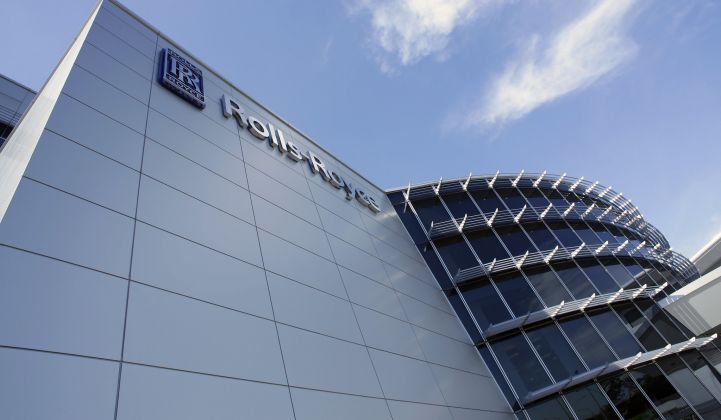Rolls-Royce is hoping Brexit will not derail plans for an £18 million ($22.4 million) cash injection toward its small modular reactor (SMR) technology.
The money, pledged by the U.K. government in July, is due in the middle of October, shortly before the revised deadline for the country’s yet-to-be-agreed exit from the European Union.
The government cash is due to be matched by a consortium led by Rolls-Royce that also includes construction and engineering firms including Assystem, SNC-Lavalin/Atkins, Wood, Arup, Laing O’Rourke, BAM Nuttall and Siemens.
The consortium, which also includes the U.K. National Nuclear Laboratory and Nuclear Advanced Manufacturing Research Centre, views the government cash as an essential step in moving forward with a development plan worth £500 million ($622 million) over four and a half years. The initial £36 million from government and consortium partners would be used to refine the SMR design over the next 15 months, said David Orr, senior vice president of nuclear at Rolls-Royce.
Full development of the SMR design, which will use pressurized water reactor technology to deliver almost 1.3 gigawatts of thermal energy and 440 megawatts of electricity per unit, is expected to cost around £1.5 billion, Orr told GTM.
The follow-on work would require not only further cash from government but also changes to policy and legislation, he said. SMR development has broad cross-party support in the U.K., he noted, but progress could be hampered by the country’s continuing lack of clarity over Brexit.
This uncertainty has already contributed to delays to the Rolls-Royce program, which was due to see the first SMRs entering commercial operation around 2030. “We’ve probably slipped by 12 months,” said Orr.
A failure to secure government funding would put the program at risk, he said, since potential foreign customers in Central and Eastern Europe, the Middle East and elsewhere would be unlikely to buy a British product that had not been endorsed by the nation’s own administration.
Big export potential
Orr said the export market for the SMR design could be “equal or greater” to potential sales within the U.K. Rolls-Royce has calculated the reactor could have an addressable market of up to 79 gigawatts of capacity outside Britain.
Assuming it gets funding, Rolls-Royce is confident its design could deliver power at a cost of £60 ($75) per megawatt-hour even with a relatively high weighted average cost of capital. The cost of capital is the biggest factor affecting the pricing of the design, said Orr. Lower costs of capital could allow Rolls-Royce to cut costs to around £40 ($50) per megawatt-hour, he said.
The cost of the design would benefit from high levels of offsite assembly. Rolls-Royce plans for around 85 percent of the reactor to be assembled offsite, reducing construction costs.
In anticipation of the government funding, the Rolls-Royce consortium has already been carrying out public engagement events at three target installation sites around the U.K. These are all sites that formerly housed British Magnox reactors and therefore already have licenses in place, Orr said.
Edward Kee, of the Washington, D.C.-based Nuclear Economics Consulting Group, said building a first-of-a-kind power plant would be key to any developer’s SMR ambitions. “If Rolls-Royce can get government funding to do this, it will be a big boost,” he said.
Competition from NuScale, Rosatom
A working prototype could help SMR vendors get beyond marketing claims to demonstrate actual capital and operating costs, as well as showing how the vendor is implementing any claimed improvements in nuclear safety, said Kee.
Being first past the post with an operational SMR is increasingly becoming a matter of urgency for the nuclear industry as renewable energies such as wind and solar continue to fall in price. In 2016, the International Atomic Energy Agency listed 48 organizations working on SMR designs.
But progress toward commercialization has been slow, and there are concerns that no single vendor may be able to achieve the volume production needed for vital economies of scale.
In the U.S., developer NuScale hopes to have its first SMR up and running by the mid-2020s. But the current front-runner in the SMR race is Russian state nuclear energy corporation Rosatom, which could have a floating design in operation next year.
This crowded field could pose a challenge for Rolls-Royce, Kee said. “There are a lot of SMR and advanced reactor designs and companies,” he commented. “Rolls-Royce will have to compete with them.”




